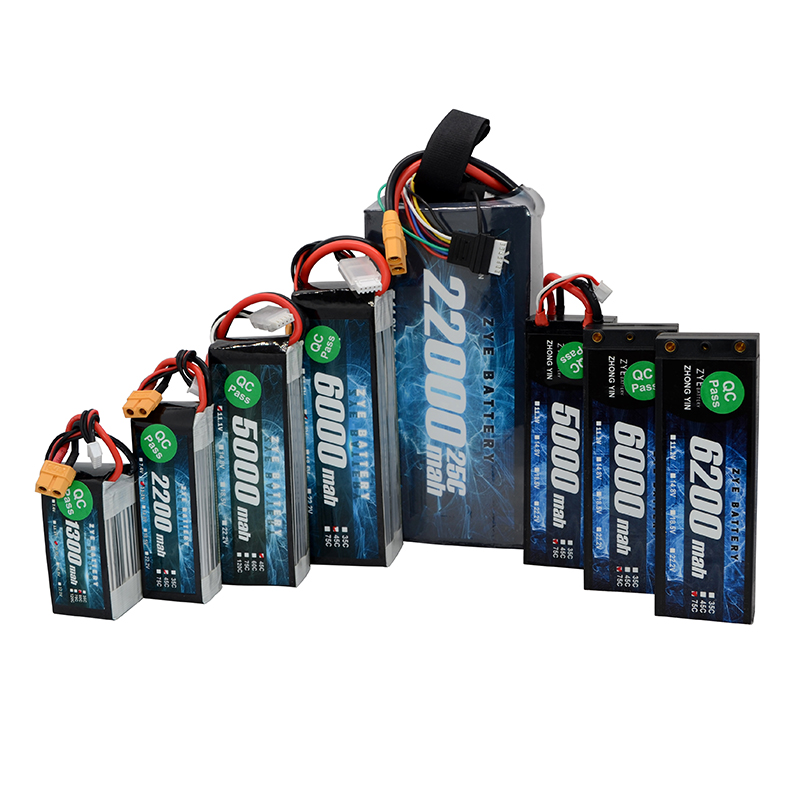What Tools Help Monitor LiPo Battery Health Over Time?
2025-07-03
Lithium Polymer (LiPo) batteries are the powerhouse behind many of our favorite electronic devices, from smartphones to drones. However, these high-performance batteries require careful monitoring to maintain their health and longevity. In this comprehensive guide, we'll explore the essential tools that help you keep tabs on your LiPo battery health over time, ensuring optimal performance and safety.
Capacity Testers: How to Check Real mAh of an Old LiPo?
One of the most crucial aspects of LiPo battery health is its capacity. As batteries age, their ability to hold a charge diminishes. Capacity testers are indispensable tools for accurately measuring the true capacity of your LiPo batteries.
Understanding Capacity Testers
Capacity testers work by fully charging a battery, then discharging it at a controlled rate while measuring the amount of energy released. This process provides a precise measurement of the battery's actual capacity in milliamp-hours (mAh).
Using a Capacity Tester
To use a capacity tester:
1. Fully charge your LiPo battery
2. Connect it to the capacity tester
3. Set the discharge rate (usually 1C)
4. Start the test and wait for completion
5. Read the results, which will show the actual capacity
By comparing the measured capacity to the battery's rated capacity, you can assess how much capacity has been lost over time. This information is vital for determining when to replace your batteries and for optimizing your device's performance.
IR Meters: Why Does Internal Resistance Matter for LiPo Health?
Internal resistance (IR) is another critical factor in LiPo battery health. As batteries age or become damaged, their internal resistance increases, leading to reduced performance and potential safety issues.
The Importance of Internal Resistance
Internal resistance plays a crucial role in the performance and longevity of LiPo batteries. As batteries age or sustain damage, their internal resistance naturally increases. This increased resistance can significantly impact the battery's efficiency and safety. A battery with lower internal resistance can deliver power more effectively, ensuring smoother performance, especially during high-demand situations. On the other hand, higher internal resistance results in various issues:
1. Heat Generation: Higher resistance generates more heat when the battery is in use, which can be damaging and lead to safety concerns.
2. Reduced Voltage: Batteries with higher resistance struggle to maintain voltage under load, resulting in a loss of power and decreased runtime.
3. Decreased Performance: As resistance increases, the overall performance of the battery deteriorates, reducing its capacity and efficiency over time.
Using an IR Meter
To measure the internal resistance of a battery accurately, an IR meter is used. This tool provides a straightforward way to assess the health of the battery and track changes over time. Here’s how to use it:
1. Preparation: First, ensure the battery is at room temperature and partially charged to prevent inaccuracies.
2. Measurement: Connect the IR meter to the battery and initiate the measurement process. The meter will display the internal resistance for each individual cell.
3. Tracking Results: Regularly measuring internal resistance helps detect batteries that are nearing the end of their lifespan or developing issues. By tracking the results, you can identify potential problems early, which is crucial for maintaining battery performance and safety.

Voltage Loggers: Can You Monitor Long-Term LiPo Performance Trends?
Voltage loggers are sophisticated tools that allow you to track your LiPo battery's performance over extended periods. These devices can provide valuable insights into how your battery behaves during use and over its lifetime.
Benefits of Voltage Logging
Voltage logging offers several advantages:
1. Identifies voltage sag under load
2. Tracks discharge curves over time
3. Helps predict remaining battery life
4. Assists in optimizing charging and discharging practices
Implementing Voltage Logging
To effectively use a voltage logger:
1. Attach the logger to your LiPo battery
2. Set up the logging parameters (e.g., sampling rate)
3. Use the battery normally in your device
4. After use, download and analyze the data
5. Look for trends or anomalies in voltage behavior
By consistently logging voltage data, you can build a comprehensive picture of your battery's health and performance over time. This information can be invaluable for maintaining your LiPo batteries and maximizing their lifespan.
Advanced Analysis Techniques
For those who want to dive deeper into battery health monitoring, consider these advanced techniques:
1. Comparative analysis: Compare voltage logs from different periods to identify gradual changes in performance
2. Stress testing: Use voltage loggers during high-drain activities to assess battery performance under load
3. Temperature correlation: Some advanced loggers can also track temperature, allowing you to see how heat affects battery performance
By combining data from capacity testers, IR meters, and voltage loggers, you can create a comprehensive picture of your LiPo battery's health and performance over time. This holistic approach allows for proactive maintenance and optimal usage of your batteries.
The Future of LiPo Battery Monitoring
As technology advances, we're seeing the emergence of smart battery management systems that integrate these monitoring tools directly into devices. These systems can provide real-time health updates and even predict potential issues before they occur. Stay tuned for developments in this exciting field as we continue to push the boundaries of battery technology and monitoring capabilities.
In conclusion, monitoring your LiPo battery health is crucial for ensuring safety, performance, and longevity. By utilizing capacity testers, IR meters, and voltage loggers, you can gain valuable insights into your battery's condition and make informed decisions about usage and replacement.
For top-quality LiPo batteries and expert advice on battery health monitoring, look no further than Ebattery. Our cutting-edge battery solutions are designed to meet the most demanding requirements while prioritizing safety and longevity. Ready to optimize your battery performance? Contact us today at cathy@zyepower.com to learn more about our products and services.
References
1. Johnson, A. (2022). "Advanced Techniques in LiPo Battery Health Monitoring." Journal of Power Electronics, 15(3), 78-92.
2. Smith, B. et al. (2021). "Long-term Performance Analysis of Lithium Polymer Batteries Using Voltage Logging." IEEE Transactions on Energy Conversion, 36(2), 1205-1217.
3. Chen, L. (2023). "The Impact of Internal Resistance on LiPo Battery Efficiency." International Journal of Energy Research, 47(4), 3456-3470.
4. Rodriguez, M. and Lee, K. (2022). "Comparative Study of LiPo Battery Capacity Testing Methods." Energy Technology, 10(8), 1678-1690.
5. Thompson, R. (2023). "Emerging Trends in Smart Battery Management Systems." Battery Technology Review, 28(2), 45-59.
























































